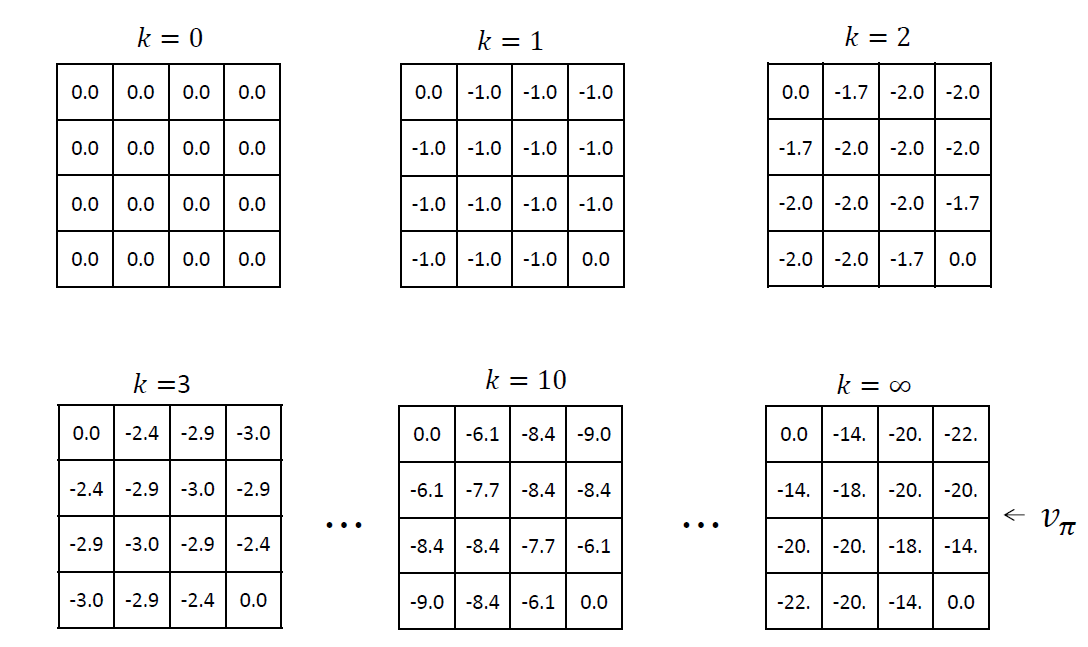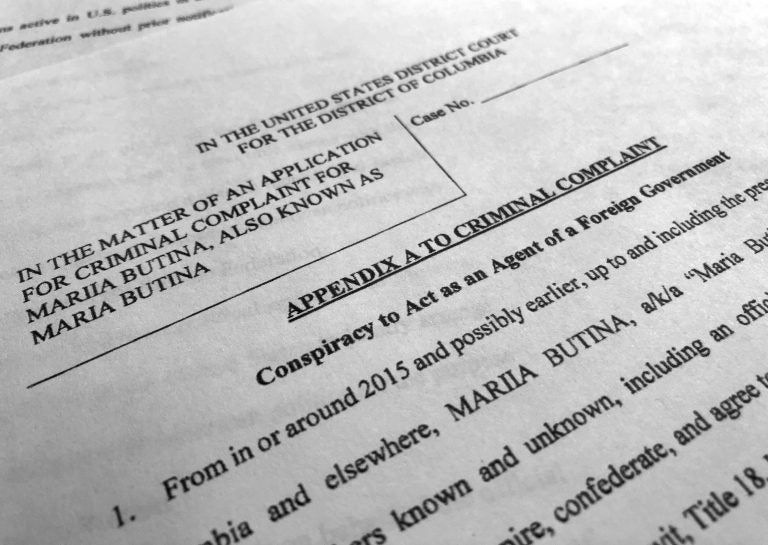Acid hydrolysis of ethyl acetate experiment
Acid hydrolysis of ethyl acetate experiment
![Segoro Mas Furniture]()
The recovered ethyl benzoate was found to have lost a portion of its The recovery of ethyl acetate in the dis tillation is complete within the accuracy of the colorimetric method. Conduct the base hydrolysis of ethyl acetate under various conditions. The functional group -COOR, R here is a ethyl group C2H5. Ester: Ethyl acctate A. Experiment 3. S. b. The reaction is basically the O-H of the acid being replaced by O-R (where R = the carbon chain of the alcohol). For example, in the conversion of cellulose or starch to glucose. ethyl acetate would yield ethanoic acid (acetic acid) C. In this experiment you will hydrolyze acetamide under alkaline and acidic conditions. By A.

Predict the ester product to be made in each reaction. The temperature and flow rate dependence of the calculated reaction rate constant, and then the activation energy of the reaction, will be determined. Describe what is meant by an amide, showing the structure of at least one example of a compound In organic chemistry, acid hydrolysis is a process in which a protic acid is used to catalyze the cleavage of a chemical bond via a nucleophilic substitution reaction, with the addition of the elements of water (H 2 O). These mechanisms are among some of the most studied in organic chemistry. 00 mL of ethyl acetate and 2. The rate constant value for the acidic hydrolysis of ethyl acetate is in 10 -3 and for alkaline hydrolysis is in 10 -5 . The product of the ammonolysis of benzoyl chloride is benzamide. 8H 2O with Waugh structure Yuan Hua, Fan Xiaozhen and Zuo Shaoqing College of Chemistry and Chemical Engineering, Cangzhou Normal University, Cangzhou, Hebei, China _____ ABSTRACT (NH 4)6[MnMo 9O32]·8H 2O with Waugh structure was used as a catalyst for synthesizing ethyl acetate. The production of acetate, at the expense of hydroxide in the solution, allows the rate to be followed through the conductivity of the solution: The nature of the experiment was the same, and the results were similar to those observed in the acid-catalyzed reaction. Hydrolysis of esters – Esters break down into their respective organic acid and alcohol from which they are formed. Two carbons in each of the reactants and 4 carbons in the product.

Purification; Many procedures for this synthesis call for the neutralization of Ethyl Acetate with Sodium Carbonate, in order to remove the Acetic Acid present. 901). Wear gloves while manipulating the reagents for this experiment. ethyl ethanoate + water ==> ethanoic acid + ethanol whereas esterification is the opposite The International Baccalaureate program has a complete set of objectives for an IB Chemistry class at the standard level (SL) and the higher level (HL). Catalytic Hydrolysis of Ethyl Acetate [Type the document subtitle] Summer [Pick the date] Executive Summary: The purpose and primary goal of this unit operations experiment was to investigate the kinetics of the acid-catalyzed hydrolysis of ethyl acetate to acetic acid and ethanol using an ion- exchange resin as the catalyst in a small scale plug flow reactor. i. Hydrolysis of Acid Derivatives Acyl halides and Acid anhydrides acetyl chloride acetic anhydride A. 02M) have shown that the 0. The acid portion of the ester ends up as the salt of the acid (in this case, the potassium salt). In yeasts and presumably other organisms, the level of ethyl acetate is modulated by the activities of alcohol acetyltransferases and esterases . The most common hydrolysis occurs when a salt of a weak acid or weak base (or both) is dissolved in water.

—Volatile acids (acetic acid) ETHYL ETHANOATE + WATER ETHNOIC ACID + ETHANOL. Hydrolysis of Methyl Acetate Viktoriah Serra Experiment #6 CHM 341 Lab partners: Sarah Richards and Nathan Holbeck Subscribe to view the full document. R - C - N O H H Abstract This experiment utilizes an acid-catalyzed hydrolysis of ethyl acetate to determine the rate kinetics of the reaction, and the reaction mechanisms of the catalytic system. If an ester is warmed with water or any dilute acid/alkali (faster), it changes back into the original carboxylic acid and alcohol. 0 As a combination of divided wall column (DWC) and reactive-distillation column, the reactive divided wall distillation column is a highly complex technology that reaction and separation can occur simultaneously, which can reduce the energy consumption and decrease the costs of captial and operation. Esters form when a carboxylic acid reacts with an alcohol. Ethyl acetate is flammable, and its explosive limits in air are 2. Abstract In the Hydrolysis of Methyl Acetate experiment Methyl Acetate, Sodium Hydroxide, Hydrochloric Acid, and phenolphthalein were used to create two temperature variables, 25C and 35C. Each nucleotide is comprised of a molecule of deoxyribose, a phosphate group, and one of four nitrogenous bases, adenine and guanine (purines) and thymine and cytosine (pyrimidines). In hydrolysis of ethyl Ethan ate, the reaction produces ethanoic acid (CH3COOH) and ethanol (C2H5OH). From these rate constants the activation energy and entropy of activation can be calculated.

: : choline, ethyl acetate, and N-acetylalanine were not hydrolyzed. Best Answer: Actually acid hydrolysis of methyl acetate with excess of water is called a "pseudo-first order reaction". Methyl acetate is a flavouring ingredient. Because the proton is not consumed in the reaction, the process is referred to as acid-catalyzed hydrolysis. Ethyl acetate is found in many foods such as kiwi fruit, guava fruit, roasted filberts, blue cheese and baked potatoes. Some esters are also bioactive. Statistical The hydrolysis of esters is catalyzed by either an acid or a base. a. Do not get salicylic acid on the skin or in the eyes. equation, activation energy. Slightly soluble in water, it is readily soluble in such liquids as alcohol, ether, and chloroform.

Hilal Ecosystems Research Division National Exposure Research Laboratory Athens, Georgia U. 1: Soap from Shortening 350 SECTION 37 Ester Synthesis 352 Thus, diethyl ether and ethyl acetate, which are both less dense than the dilute solutions that are usually used for extraction, form the top layer, while dichloromethane and chloroform form the bottom layer (currently both of them are not used in Chem 30BL or Chem30CL due to safety concerns!). The hydrolysis reaction of an ester in pure water is a slow reaction and when a mineral acid like hydrochloric acid is added, the rate of the reaction is enhanced since the H + ions from the mineral acid acts as the catalyst. NaOH+ CH 3 COOC 2 H 5 → CH 3 COO- Na+ + C 2 H 5 OH (2) When it comes to chemical kinetics, this reaction is a prominent There is the formation of five normal azeotropes i. O. Ester Formation: Preparation of Benzocaine. At 25° in HCl, HBr, HCIO 4 , and H 2 SO 4 (up to 84% by mass), hydrolysis occurs through an activated complex, formed from the nonionized form of the ester, the H 3 O + ion, and the nucleophile (molecules of water and nondissociated acid, anions and Process for the preparation of ethyl acetate by hydrogenating acetic anhydride in the presence of a Raney nickel catalyst. 00 mL of ethyl acetate. Butyric acid is formed from hydrolysis of ethyl and methyl butyrate (butanoate), esters that smell like pineapple and apple. Esters, acid chlorides, ethers, and amides are all derivatives of carboxylic acids. Chem 367-2/ Hydrolysis of Ethyl Acetate TO BE ADAPTED TO THE HANNA CONDUCTIVITY METER 13 KINETICS OF HYDROLYSIS OF ETHYL ACETATE .

This reaction is reversible and acetate can be hydrolyzed back into alcohol and acetic acid in the presence of strong bases or strong acid, especially at elevated temperature. ) odor. Be able to systematically name esters. At any given pH, the overall rate of ester hydrolysis is generally dominated by one or two of these terms. If it was kinetic experiment of hydrolysis of ethyl acetate, then you have to add ice in order to prevent the reaction to proceed any further. Dee and Alexis T. Experiments were conducted in a packed bed reactor in the temperature range 313–323K using a rectangular pulse input. What is the pH and the pOH of the solution? asked by sam on November 29, 2012 Prepare ethyl acetate (density of ethyl acetate is 0. Objectives. The equili brium constant K c for this equation is defined by the following expression: K c = [EtOH] [HAc] [EtAc] [H 2 O]. Ethyl acetate is CH3-(C=O)-O-CH2-CH3 It's an ester.

I will suppose that you were doing similar experiment to mine from some time ago. 7 and Fig. The primary objective of this experiment is to conduct a series of reactions from which you will determine the rate law expression for the base hydrolysis of ethyl acetate. Preparation. The default solver for three phase columns is the sparse continuation solver which is an advanced solver designed Reaction rate and activation energy of the acid hydrolysis of ethyl acetate 05. 4 × 10−4 (mol/L)–1s–1 for the catalyzed reaction. Because my method doesn’t involve the contamination of Ethyl Acetate with Acetic Acid, this is unnecessary. In fact, if you dissolve your compound in pure ethyl acetate at say room temperature and then cool the solution to 4-5 °C in an ice bath, you describe the preparation of 2litres of 0. (continued on other Experiment 13 What’s That Smell? (Synthesis of Esters) OUTCOMES After completing this experiment, the student should be able to: Be able to identify the ester, carboxylic acid, and alcohol functional groups. Volatile acids. !!To!learn!the!mechanisms!of!acid!catalyzed!ester!hydrolysis!and!base! promoted!ester!hydrolysis.

The details are provided in Table-4. The aroma of ethyl acetate is most vivid in younger wines and contributes towards the general perception of "fruitiness" in the wine. Ethyl benzoate enriched in 18 O at the carbonyl oxygen was subjected to hydrolysis in base, and samples were isolated before saponification was complete. The reaction rate is expressed in terms of chemical composition of the reacting species. Introduction Soap is produced by the saponification (hydrolysis) of a triglyceride (fat or oil). This reaction is called hydrolysis or saponification i. 7. It is formed in the process of fermenting beers. Consequently, it became necessary to determine whether the hydrolysis of acetylthiocholine iodide could be accounted for by Reactions 1 and 2. Figure 1: Ethyl acetate conversion % for hydrolysis of ethyl acetate without a catalyst The liquid phase hydrolysis using the homogeneous catalyst, hydrochloric acid is carried out. 6 B-D, pp 622-626] H 3C OH O ace tic acid H3C-CH 2- O-H ethanol H+ Δ HC + CH2CH3 + H ehyl ac The experimental equilibrium constant for the reaction above is: [ethyl acetate] x [H2O] [acetic acid] x [ethanol] K eq = = 3.

Götze, J. 2M acetate buffer of pH 5. 3. Experiment #6 Pre-Lab Exercise 1. 00 mL of DI water. Table 4: Hydrolysis of ethyl acetate with ionic compound at 26 °C Synthesis, Isolation, and Purification of an Ester AP Chemistry Laboratory Introduction An ester is a chemical compound that is formed when an organic acid reacts with an alcohol. Methyl acetate is present in grape, banana and other fruits Methyl acetate is an ester that is synthesized from acetic acid and methanol in the presence of strong acids such as sulfuric acid in an esterification reaction. !!!2. Thus the ester formed is called ethyl ethanoate. synthesis of methyl acetate, removal of dilute acetic acid from wastewater, and hydrolysis of methyl acetate. Payne* Measurements Branch Environmental Research Laboratory Athens, GA 30613 *Technology Applications, Inc.

d. , and William D. Alcoholysis: Schotten-Baumann Reaction Acetic acid Acyl halides and acid anhydrides: Acetyl chloride Acetic anhydride C. One side ends up as a carboxylic acid and one side ends up as an alcohol. In an experiment 500 mL of 0. CH3COOC2H5. Carefully wrap a place aluminum foil around a cork such that no cork is visible and stopper the test tube with this cork. Res. 00 mL 3 M HCl and 5. 2. Use a weaker acid.

Determination of the Solubility- Product Constant for a Sparingly . The parabens, 4-hydroxybenzoic acid, and phenol were identified according to their retention times and quantified with the appropriate calibration curves. A Study of the Acid-Catalyzed Hydrolysis of Cellulose Dissolved in Ionic Liquids and the Factors Influencing the Dehydration of Glucose and the Formation of Humins Sean J. Crude oleuropein (3. Thus, the hydrolysis of ethyl acetate (CH 3 OOC 2 H 5) by sodium hydroxide (NaOH) to produce sodium acetate (CH 3 COON A But this is not what I'm saying. methyl propanoate would yield propanoic acid B. E29 Preparation of Aspirin (Acetylsalicylic Acid) and Thin-Layer Chromatography of Analgesic Drugs THE TASK To prepare a pharmaceutical compound and test its purity. 00 mL of ethyl acetate and 1. The antimicrobial compound(s) in olive brines readily partitioned into chloroform or ethyl acetate; oleuropein partitioned only into ethyl acetate. ----- EPA/600/R-06/105 September 2006 Estimation of Hydrolysis Rate Constants of Carboxylic Acid Ester and Phosphate Ester Compounds in Aqueous Systems from Molecular Structure by SPARC By S. The rate of the reaction depends on the proton concentration; thus, the rate increases as the pH decreases.

methyl formate would yield formic acid D. The reaction mechanisms are similar to those for the hydrolysis of other acid derivatives. Ethyl acetate (CH 3 CO 2 CH 2 CH 3) is much more polar and acetyl salicylic acid is very soluble in pure ethyl acetate. 5,starting from 2. I would indeed go for the ref you found, always a better idea. Pöpken, L. Carboxylic esters hydrolyse to the parent carboxylic acid and an alcohol. Alcohol, acetone, and ether are highly flammable (in increasing order of fire hazard). R - C - N. For example, butyric acid (butanoic acid) is the main component responsible for the odor of rancid butter. It starts by looking at the hydrolysis of simple esters like ethyl ethanoate, and goes on to look at hydrolysing bigger, more complicated ones to make soap.

55 mol/litre. Esters are an important group of carboxylic acid derivatives. 1 kcal/mol, AS* = - 17 e. For a solution consisting of 10 ml of ethyl acetate, 100 ml of water and 5ml of 1M HCl catalyst, the ethyl acetate conversions experiment, we will take a closer look at the acid catalysed hydrolysis of the Ethyl Chloro acetate, forming chloro acetic acid and ethanol. Determination of rate constant of acid catalysed hydrolysis of an ester . My guess is that because ethyl acetate has the ethyl group(2 carbon chain) attached to the acetic acid root, the oxygen that connects the ethyl group is now more shielded and less polar than it Experiment 34. In this experiment, equilibrium constant for the hydrolysis of ethyl acetate will be determined: Ethyl Acetate + Water ⇄ Ethyl Alcohol + Acetic Acid. Environmental Protection Agency Office of Research and Development Washington, DC 20460 Ethyl acetate is the most common ester in wine, being the product of the most common volatile organic acid — acetic acid, and the ethyl alcohol generated during the fermentation. The temperature and pH are measured over the course of an hour to record the data for analysis. propyl propanoate would yield propanoic acid All you have to do is cleave the ester at the oxygen. Ester group.

06 g) wasobtained from the reaction mixture by extraction with ethyl acetate, followed by as lactic acid), and reducing sugars in brines have been described (5). 556 M acid. 00 mL 3 M HCl, 4. The condensation products are often α,β-unsaturated carbonyl compounds. proportions of ethyl acetate and water were heated together, hydrolysis of the ester stopped when about one-third of the ester was hydrolyzed. constant can be calculated. 6 in 0. The reaction studied is the hydrolysis of ethyl acetate which can be represented by the Ethyl acetate is the most common ester in wine, being the product of the most common volatile organic acid – acetic acid, and the ethyl alcohol generated during the fermentation. In the proposed work review on modeling of the reactive distillation column for the production of ethyl acetate is given. In many cases, the characteristic artificial flavors and fragrances of food and beverages are due to simple ester compounds. 02M of Ethyl Acetate shows a increase in the rate of reaction and conversion rate of Sodium Hydroxide to Sodium Acetate.

PRACTICAL REPORT DETERMINATION OF REACTION RATE AND REACTION RATE CONSTANT A. It is a sweet smelling, colourless, liquid used in perfumery under the name Essence de Niobe; in the Ethyl acetate is flammable and harmful by inhalation, ingestion, and when in contact with skin. Jackson Ellington, Frank E. Ethyl acetate is extremely flammable and harmful. Patreon link: http://www Exercise 8 KINETICS OF THE HYDROLYSIS OF ETHYL ACETATE Theory CHEMICAL KINETICS Chemical reactions, reaction rate Chemical kinetics is the part of physical chemistry that studies reaction rates. The neutral hydrolysis of methyl acetate and catalysis of the reaction by the acetic acid product have been studied in the temperature range 90–110 °C. The combined ethyl acetate layer was evaporated to dryness and the residue was dissolved in 1. Ethyl acetate is traditionally synthesised from by heating ethanol with ethanoic acid in the presence of a catalytic amount of a strong acid such as sulphuric acid (the "Fischer" method). It is sometimes produced in a laboratory experiment by the reaction of acetic acid, commonly in the 5–8% solution known as vinegar, with sodium carbonate ("washing soda"), sodium bicarbonate ("baking soda"), or sodium hydroxide ("lye", or "caustic soda"). Ethyl acetate itself is a colourless liquid at room temperature with a pleasant "fruity" smell, b. Based on the alkalimetric determination of the acetic acid formed, conclusions hydrolysis (hīdrŏl`ĭsĭs), chemical reaction of a compound with water, usually resulting in the formation of one or more new compounds.

39 (2000) 2601–2611]. antihyperglycaemic and antidyslipidemic activities in ethyl acetate fraction of fruits of marine mangrove xylocarpus moluccensis arvind kumar srivastava1, priti tiwari1, swayam prakash srivastava1, rohit srivastava1, akansha mishra1, neha rahuja1, sukanya pandeti2, akhilesh kumar tamrakar1, tadigoppula narender2, mahendra nath srivastava3 in dilute mineral acid. Reagents : aqueous acid (e. PROCESS SIMULATION STUDY OF ETHYL ACETATE REACTIVE DISTILLATION COLUMN BY HYSYS® 3. Esterification [see Ege’s: Sections 15. Stand 1, Jr. 2 Lab Report 9 - Lecture notes 9. studied for the liquid-liquid extraction of acetic acid from an aqueous phase using ethyl acetate as a solvent. CH 3 COOC 2 H 5 + H 2 O CH 3 COOH + C 2 H 5 OH Experiment 26 in Sime (1) entitled Hydrolysis of Ethyl Acetate Experiment 23 in Daniels (2) entitled Reaction of Ethyl Acetate with Hydroxide Ion Followed by Electrical Conductance Introduction The objective of this experiment is to measure the Arrhenius parameters (activation Determination Of First Order Reaction Rate Constant For Acid Hydrolysis Of Ethyl Acetate {L - Duration: 28:19. 8 Reaction Kinetics Hydrolysis of ethyl acetate ester Write an equation for the hydrolysis of methyl benzoate in a potassium hydroxide solution. Hydrolysing simple Salicylic acid is more corrosive than acetylsalicylic acid.

4 g dry weight) from an ethyl acetate extract of olives was dissolved in 10 ml of anhydrous methanolic HCl (5%), sealed in an am-poule under nitrogen, and heated at 65 C for 3. (n. It may be pointed out here that the optimal rate of hydrolysis of S-acetyl-GSH was at pH 8. experiment are: C-O- CH 3 OH O-O-Na+ O-Na+ OH O C-OH CH 3OH+H 2O H 2SO 4 (dilute) 2 NaOH methyl salicylate salicylic acid + + Because the phenolic hydroxyl group is acidic, it is also converted to the corresponding sodium salt during the basic hydrolysis. SOLUTION. For example, imagine that a mixture of benzoic acid and cyclohexane is dissolved in an organic solvent like ethyl acetate in a separatory funnel. ) Your Bibliography: DETERMINATION OF THE RATE CONSTANT FOR THE ACID-CATALYZED HYDROLYSIS OF METHYL ACETATE. Since the main process uses both ethanol and acetic acid it appears wasteful to get rid of the co-product stream. In technical terms, To follow the reaction by a titrimetric method and determination of the first order rate constant by a graphical treatment of the data. The salicylic acid, acetylsalicylic acid, and aspirin tablets used as unknowns may be contaminated through In the case of acid-catalyzed hydrolysis, an acid, usually a proton (H+) catalyzes the bond breaking and bond making process. This experiment was conducted to study the saponification reaction between sodium hydroxide and ethyl acetate in a continuous-stirred tank reactor (CSTR).

5 N sodium hy- droxide solution after 3 hours at room temperature. Acetic acid is called ethanoic acid by the IUPAC rules. To A add 5. S Enzymic Hydrolysis of Colanic Acid ethyl acetate-acetic acid-formic acid-water The results of a typical experiment in which the Experiment 5 Exp 5-2 The Knoevenagel reaction in its simplest form is the condensation of malonic esters (or their analogues) with aldehydes or ketones in the presence of an amine base catalyst plus a small amount of carboxylic acid (or amino acid) cocatalyst. 00 mL 3 M HCl, 3. KOMAL SINGH 14,393 views In this video, I purify ethanol from hardware-store denatured alcohol by hydrolyzing its ethyl acetate component with sodium hydroxide. Like esterification, the reaction is reversible and does not go to completion. Soluble Salt 34. The mixture is with respect each of alkali and ester. Separation of these azeotropes is very difficult. Created Date: 12/30/2005 12:18:51 PM Why is the hydrolysis of ethyl acetate a pseudo first order reaction in the presence of acid? What is the effect of HCl in the hydrolysis of NaOH and ethyl acetate? Why do we titrate at the end of the experiment concerning ethyl acetate NaOH and HCl? 95.

01. the conversion is complete in 0. 77} asked by OCHAI on April 19, 2015; science. Acetates are usually seen a derivatives of acetic acid. Industrial importance of the reaction product, sodium acetate, necessitate for process improvement in terms of maximum conversion and economical usage of raw materials. Acetic acid, ethyl ester [ACD dioxane-water with C-0 bond cleavage in 0. Control Data on the hydrolysis of ethyl acetate in aqueous solutions of strong acids were analyzed. Methyl acetate is found in apple. 02 LEC 05 Chemical Kinetics Principle and tasks Ethyl acetate is hydrolysed in an acid solution according to a pseudo-first order rate law to equivalent quanti-ties of ethanol and acetic acid. 38 In this experiment, saponification of ethyl acetate in the presence of sodium hydroxide is used to demonstrate the saponification reaction. H H.

Experiment [8B]: The Fischer Esterification Ten Different Flavors Read Mayo, Experiment [8B] and associated background Introduction Esters tend to have pleasant odors. Give an example of each. THE SKILLS By the end of the experiment you should be able to: • use recrystallisation to purify solids, • load, prepare and develop thin layer chromatography plates, For a primary amide, the product will be ammonium ion and the acid (for acidic hydrolysis) or ammonia and carboxylate ion (for alkaline hydrolysis). The reaction is reversible. The Ethanol present aids preventing the hydrolysis of Ethyl Acetate. 5mL of methanol:water •Hydrolysis of compounds from oak •Oxidation of grape phenolics •Note: ethyl acetate is formed from acetic acid and ethyl alcohol •Ethyl acetate is often found accompanying the presence of acetic acid The kinetics of paraben hydrolysis and phenol formation were nearly identical for ethyl- and propylparabens at similar concentrations (results not shown). e. Войти Регистрация The hydrolysis of ethyl acetate (CH3COOC2H5) by sodium hydroxide yields ethanol (C2H5OH) and sodium acetate (NaO2CCH3) by the reaction shown, which follows second order kinetics. As the hydrolysis occurs, HCl is generated as on of the products, thus lowering the pH base hydrolysis fraction was further treated with 25mL of concentrated HCl and mixture stirred for 30min in a hot water bath at 851C. Hydrolysis involving organic compounds may be illustrated by the reaction of water with an ester of a carboxylic acid; all such esters have the general formula RCO―OR′, in which R and R′ are combining groups (for example, if R and R′ both represent the methyl group, CH 3, the ester is methyl acetate). 5M solution of acetic acid and 2.

Show the chemical reaction for the hydrolysis of the ester, ethyl acetate, indicating the two products of this reaction. Hydrolysis of Ethyl Acetate (recommended by Bjorn Tyreus, DuPont) Your company has a process that generates a co-product stream containing 50 wt% ethyl acetate in ethanol. HYDROLYSIS of esters. Principle In acid solution, ethyl acetate is hydrolysed to equivalent quan-tities of ethanol and acetic acid according to a pseudo-first order rate law. Ethyl acetate hydrolyzes in alkaline solution to give ethanol and acetate. As ethyl acetate is highly inflammable I'd like to ask what would be a correct way to store it without leaking the vapors. A large excess of H2O is used to drive the equilibrium towards the carboxylic acid product (Fischer esterification is the opposite process). Aminolysis: Anilide Formation Acyl halides and acid anhydrides: Acetyl chloride Acetic anhydride D. Why are three layers observed sometimes? EXPERIMENT 5 ORGANIC SYNTHESIS: FISCHER ESTERIFICATION 1 Materials Needed n-butyl alcohol, acetic acid, concentrated sulfuric acid saturated aqueous sodium carbonate (sat Na 2CO 3(aq)) anhydrous calcium chloride pellets (CaCl 2(s)) distillation apparatus including thermometer separatory funnel boiling chips litmus paper Additional Reading For laboratory use, sodium acetate is inexpensive and usually purchased instead of being synthesized. This is typically done by the hydrolysis of methyl acetate with water to produce a mixture of methyl acetate, methanol, acetic acid and water, which mixture is subsequently separated to isolate the acetic acid and methanol. 01M and 0.

No cell lysis, indicated by decreases in OD, was observed in cultures of EM in media containing approximately 500 mg of either of the three parabens liter⫺1 (3 mM) after 5 h of incubation MEASUREMENT OF HYDROLYSIS . IUPAC names ester from two words: first from the prefix of the alcohol and the second from the name of the acid. d. Also the label on the plastic bottle separated as if the glue has been dissolved away. A common method is to perform an acid-base reaction, which can convert some compounds from neutral to ionic forms (or vice versa). You could just use vinegar or citric acid I suppose. (See Figure 1. Sensitivity varies, with most In-text: (DETERMINATION OF THE RATE CONSTANT FOR THE ACID-CATALYZED HYDROLYSIS OF METHYL ACETATE, n. There-fore, for detection ofantimicrobial compounds, 10ml of brine from each jar was extracted with 50 ml of chloroform. The hydrolysis of an ester such as ethyl acetate in the presence of a mineral acid gives acetic acid and ethyl alcohol. Bell*[a] Introduction It has been estimated that lignocellulosic biomass could meet about 54% of the annual consumption of oil in the US and For example, when acetic acid reacts with ethyl alcohol, the ester formed is called ethyl acetate.

4. Experiment C5 Chemistry 114 Kinetics in Solution Goals: To measure rate constants for the saponification of Ethyl acetate in sodium hydroxide solutions at several temperatures. % Ethyl Acetate Sodium Hydroxide solution The measured amount of Ethyl Acetate is added to the Sodium Hydroxide solution. In this demonstration the initial solution is alkaline as determined by the color of the indicator in solution. 8. Eng. 1 N hydrochloric acid or 0. 02, December 2011 41 three phase counterparts lies on the solver that is used. Themethyl-o-methyl elenolate (1. 1. Reaction type: Nucleophilic Acyl Substitution.

The alkalimetric determination of the acetic acid formed enables conclusions to be drawn on the temporal concentration of ester. At 35 °C To determine the specific rate constant at two or more given temperature OBJECTIVE Integration of the Equation 1 Hydrolysis of Methyl Acetate Tabulated Data and Results THANK YOU AND GOD BLESS CHEMICAL ENGINEERS Application: The speed of a Hydrolysis of Esters. The alcohol portion of the ester ends up as the free alcohol. Effects on the rate of reaction and the specific rate constant - Sumaanyu Maheshwari - Internship Report - Chemistry - Organic Chemistry - Publish your bachelor's or master's thesis, dissertation, term paper or essay ABSTRACT: Alkaline hydrolysis of ethyl acetate is essentially an irreversible and second order reaction. RATE CONSTANTS FOR EVALUATION OF HAZARDOUS WASTE LAND DISPOSAL Volume I by J. This experiment illustrates the use of conductivity measurements to follow the progress of a reaction in solution. Acetate is also 1093 вуза, 2576 предмета. 2010, A. acetate phenyl acetate ethyl acetate Figure 1: Dependence of observed hydrolysis rate constants (kh) on pH for several carboxylic acid esters. On standing at room monia; however, the isopropyl and ethyl esters of GP had sufficiently higher RI values to allow the use of these alcohols in hydrolysis studies. To C add 5.

In this scientific research a Saponification Reaction between Ethyl Acetate and caustic soda is carried out in a Batch Reactor at STP Conditions. For example, Basai Lab 10 Williamson Ether Synthesis Lab 2 Report - Lecture notes 2. Войти / Регистрация. 5H2O H2O, rt Safety Precautions: Cyclohexene oxide is corrosive and harmful. Ethyl acetate was converted to acetic acid and ethanol and conversion was found to be 24. In the subsequent acidification, this group also becomes reprotonated. It uses ethyl ethanoate as a typical ester. The ester is heated with a large excess of water containing a strong-acid catalyst. In basic hydrolysis, the molecule of the base splits the ester linkage. Chloroform-d is harmful. Ethyl acetate is a volatile compound that is in wines, brandy, fruits like pineapple and essential oils obtained from fruits and flowers.

To B add 5. , and the solvent isotope effect kH20/kD20 = 0. CH3COOC2H5 + H2O CH3COOH + C2H5OH H+ Ethyl acetate acetic acid ethyl alcohol Therefore, the kinetics of the reaction can be studied And verifying the constancy of the value of rate by taking a known quantity of ethyl acetate and constant, K or in this case, (a - x) ( - Vo) and a mixing it with a relatively large quantity of HCl. Effort has long been directed toward the improvement of the efficiency of this reaction and the subsequent separation. 1: Hydrolysis of Benzonitrile to Benzoic Acid 346 SECTION 36 Base-Catalyzed Hydrolysis of Esters: Soap Making 347 Experiment 36. To To fully assess the enantioselective hydrolysis of S 1 –S 3 by CuL 1, a revised Michaelis–Menten kinetic experiment was performed in the presence of excess catalyst 27,29,44,45,46. Examine the graph of your data. Abstract: A thoroughly mechanistic investigation on the [Cp 2 Mo(OH)(OH 2)] +-catalyzed hydrolysis of ethyl acetate has been performed using density functional theory methodology together with continuum and discrete–continuum solvation models. 1 M NaOH in water. The IUPAC name is different. 0, 31.

. 1st ed. Samples for GC-MS analysis were prepared by homogenizing the cell cultures by vortexing, saturating with sodium chloride, and extracting with ethyl acetate. Edit: Yes, ethanol + acetic acid = ethyl acetate. The saponification process is a process that produces soap, usually from fats and lye. A Student Researched Lab Analysis about the formation of Carbon-Carbon Double Bonds via the Wittig Experiment and the Hydrolysis of the Ester ethyl acetate, and 3 mol % Bi(NO3)3. H 2 SO 4) / heat,or aqueous NaOH / heat (known as "saponification"). For a primary amide, the product will be ammonium ion and the acid (for acidic hydrolysis) or ammonia and carboxylate ion (for alkaline hydrolysis). Fig. Acidic hydrolysis is simply the reverse of esterification. The purpose of this experiment is to investigate the kinetics of the acid-catalyzed hydrolysis of ethyl acetate, using an immobilized anion ion-exchange resin as the catalyst.

ethanol-water, Water-acetic acid, ethyl acetate –ethanol, ethyl acetate-water, ethanol-acetic acid-ethyl acetate. So, for instance, the rate will start to lose first order character as the mole ratio (water per ethyl acetate) approaches numbers of order 10 or less. The saponification of ethyl acetate reaction is as follows. As a combination of divided wall column (DWC) and reactive-distillation column, the reactive divided wall distillation column is a highly complex technology that reaction and separation can occur simultaneously, which can reduce the energy consumption and decrease the costs of captial and operation. Tasks Change in concentration of ethyl acetate for hydrolysis with NaOH. 3. Summary. The formal reaction equation of the H+-ion catalysed hydrolysis of the Ethyl Chloro acetate where k 1 and k 2 describe the reaction rate They are produced by esterification reaction from acetic acid and the corresponding alcohol in the presence of strong acids like sulfuric acid. Gmehling, Reaction kinetics and chemical equilibrium of homogenously and heterogeneously catalyzed acetic acid esterification with methanol and methyl acetate hydrolysis, Ind. For most esters, the rate of hydrolysis under environmental pHs (~ 5 - 9), Ethyl acetate is the most common ester in wine, being the product of the most common volatile organic acid – acetic acid, and the ethyl alcohol generated during the fermentation. experiment are exemplified by the following compounds: CH 3 C OH O CH 3 OH CH 3 C OCH 3 O methyl alcohol, an alcohol acetic acid, a carboxylic acid methyl acetate, an ester A functional group is an atom or a group of atoms that has certain chemical and physical properties, regardless of the hydrocarbon skeleton to which it is attached.

An anion ion-exchange resin was used as the catalyst, where ethyl acetate was hydrolyzed to form products of ethanol and acetic acid. The figures indicate that the PVA membrane strongly favours the permeation of water over those of the acetic acid and ethyl acetate present in the mixture. Of course you won't stop it completely, but at least slow down a lot. 5. Acid-Base Titration Curves 19 Experiment 5. Calculate the rate law constant, k, for the reaction. A laboratory scale sonicator (ultrasonic bath) was employed to study the effect of various operating conditions for the separation of acetic acid from its aqueous solution. [T. At 25 °C By: Nacario and Co. The Esterification kinetics of acetic acid with ethanol in the presence of sulfuric acid as a homogenous catalyst was studied with isothermal batch experiments at 50-60°C and at a different molar ratio of ethanol to acetic acid [EtOH/Ac]. a Buffer Solution 24 Experiment 6.

This is because even after ample amount of time, only the concentration of methyl acetate changes to a significant amount and the concentration of water remains almost same due to the fact the water has a very high concentration of 55. per litre of ethyl acetate (12 determinations). Food and beverage manufacturers are Acetylsalicylic acid is fairly polar and not soluble in pure hexane. 5 h. In this experiment, you will. The first step in the Fischer esterification is the protonation of the carbonyl carbon of the carboxylic acid. Experiment 3 The Chemical Nature of DNA Chemically, DNA is a polymer composed of four simple repeating subunits, the nucleotides. 904 M acid, AH* = 24. In this experiment, we will create the ester isopentyl acetate (banana oil) via the Fischer esterification reaction. As outlined in the Chemistry syllabus in the IB Diploma Programme guide, published for the first test in 2009, these objectives are arranged Discussion: This experiment demonstrates a typical S N1 reaction (shown below) between water and tert -butyl chloride. Hoster Energy Science and Technology Introductory Laboratory (Physical Chemistry) Experiment No.

!To!learn!about!the!reactivity!of!different!esters Ester hydrolysis under acidic conditions is a reversible process. 17 × 10−8 s–1 for the uncatalyzed reaction and 1. A mathematical model for a quasi-homogeneous kinetics was developed. The reaction rate or rate of reaction for a reactant or product in a particular reaction is intuitively defined as how fast a reaction takes place. The bases C₂H₅OH + CH₃COOH = CH₃COOC₂H₅ + H₂O (formation of ethyl acetate in the presence of sulfuric acid as a dehydrating agent) CH₃COOC₂H₅ + NaOH = CH₃COONa + C₂H₅OH (formation of sodium acetate and ethanol under the impact of an alkali). Objective:!1. 4 %. The aim of this scientific research is to estimate the parameters of Arrhenius equation which are rate constant and activation energy for ethyl acetate saponification. Hydroxamic Acid Test Ethyl acetate Experiment 10 - Hydrolysis of Glycerol Tristearate: Preparation of Soap Objective In this experiment a triglyceride will be hydrolyzed in order to prepare glycerol plus the salt of the corresponding fatty acids (soap). Purpose . e.

Methyl Today I opened the drawer again to have a look at it and I noticed a very strong odor consistent with that of the ethyl acetate. The graph will show a gradual, nonlinear, conductivity decrease. The average rate of the stream is 1,000 pph. The reactivity of triethyl phosphate is compared with that of ethyl acetate. This level of ethyl acetate is 4- to 10-fold higher than the level typically observed with yeasts (5, 6, 11, 26, 30, 38, 41). Download the sample scripts and model files below for a starting point for the dynamic simulation and parameter estimation. Alkyl acid chlorides show a very exothermic reaction with water. [ebook] National Institute of Science Education and Research. Isoamyl acetate, which smells like bananas, is also an alarm pheromone Synthesis of ethyl acetate catalyzed by (NH 4)6[MnMo 9O32]. I was talking about the entire regime of dilutions where not all of the ethyl acetate is solvated, making the amount of water important to the reaction kinetics. Introduction When an ester (such as ethyl acetate) is mixed with water it is converted into alcohol and acid according to the following equation: H + CH 3 CO 2 C 2 H 5 + H 2 O <--> CH 3 CO 2 H + C 2 H 5 OH (1) The Base Hydrolysis of Ethyl Acetate Advanced Chemistry with Vernier 29 - 3 6.

When the data collection is complete, dispose of the contents of the beaker as directed. A. This compound has no known physiological function in yeasts. Version 2. 77°C. The This page describes ways of hydrolysing esters - splitting them into carboxylic acids (or their salts) and alcohols by the action of water, dilute acid or dilute alkali. Homogeneous and heterogeneous reactions have been described using the models proposed by Pöpken et al. By means of a pipette, transfer 50 ml ethyl acetate into a clean dry flask, and 50ml NaOH into another flask, stopper the two flasks. 0g of potassium acetate is added to 500. Bismuthll) nitrate pentahydrate is an irritant and is Ihwgroscopic. A thoroughly mechanistic investigation on the [Cp 2 Mo(OH)(OH 2)] +-catalyzed hydrolysis of ethyl acetate has been performed using density functional theory methodology together with continuum and discrete-continuum solvation models.

hydrolysis of an ester under basic conditions to form an alcohol and the salt of a carboxylic acid (carboxylates) and it is commonly used to refer to the reaction of a metallic alkali with a fat or oil to form soap. Objectives: ü Determine the value of the equilibrium constant for a reaction. CH 3 COOH + CH 3 CH 2 OH CH 3 COOCH 2 Esters can also be formed by the reaction of the alcohol with the acid chloride rather than the acid itself. Amide B. It can cause burns. 5M solution of KOH{4. 2. 5 wt. Chem. This page looks in detail at the mechanism for the hydrolysis of esters in the presence of a dilute acid (such as hydrochloric acid or sulphuric acid) acting as the catalyst. 2 SIMULATOR Diyala Journal of Engineering Sciences, Vol.

From two different concentrations of Ethyl Acetate (0. . c. The process can also be utilized to hydrogenate mixtures of acetic anhydride and ethylidene diacetate to produce ethyl acetate. EXPERIMENT 2: Covalent Bonding - Benzoic Acid from Ethyl Benzoate by Base Hydrolysis Introduction Ethyl benzoate (boiling point 211-213°C, melting point -34°C) belongs to a class of compounds called esters. Example 22-25; The procedure of Example 21 was followed with different hydrogen donors in lieu of PTSA and the hydrolysis was carried out. By varying the molar ratios of alcohol to acid, yields of ester >66% were obtained by displacement of the equilibrium. g. At 80°C, a sharp decrease in the selectivity is seen towards the later stages of the experiment. The phenolic acids liberated after acid hydrolysis were extracted with ethyl acetate (3 15mL). 1: Synthesis of Fluorene-9-Carboxylic Acid 342 SECTION 35 Hydrolysis of Nitriles to Carboxylic Acids 344 Experiment 35.

ü Use acid-base titrations and solution stoichiometry in determining the equilibrium constant acid catalyst accelerates the hydrolysis. Rinse and clean the beaker and the Conductivity Probe for the second trial. Ethyl ethanoate is heated under reflux with a dilute acid such as dilute 2. 1 M ethylacetate in water is mixed with 500 mL of 0. 0mL of 0. p. 2 and 9 percent by volume. Briefly describe the difference between an acid and an ester. Experiment 7. PDF | The reaction kinetics and chemical equilibrium of the reversible catalytic hydrolysis reaction of a methyl acetate to acetic acid and methanol using a strongly acidic ion exchange resin Very slow hydrolysis of ester reaction take place in the presence of pure water, so dilute acid like dilute sulfuric acid or dilute hydrochloric acid is used. Do not ingest salicylic acid or its salts (or, for that matter, any compounds in the chem lab).

Engstfeld, H. 4 Separation of Ethyl Acetate and Butyl Acetate by Simple Distillation and Analysis of Fractions by Gas Lab Report 5 - Lecture notes 5-3 ORGO LAB Midterm A - Lecture notes 3. H. 04, No. E. You also want a more polar solvent I think, like diethyl ether, DCM or ethyl acetate. Rate of Chemical Reaction: the Iodination of Acetone 38 Experiment 8 Kinetics of the Hydrolysis of Ethyl Acetate by Sodium The hypothesis of the experiment is that the increase of concentration of Ethyl Acetate would also increase the rate of reaction. 15. Any container holding ethyl acetate should be capped when not in use to prevent evaporation of the solvents, as they are harmful when inhaled. Structure, properties, spectra, suppliers and links for: Ethyl acetate, 141-78-6, EtOAc. Ethyl acetate is produced industrially by means of the esterification of ethyl alcohol by acetic acid in the presence of sulfuric acid.

PURPOSES The purpose of this experiment is to show the reaction of ethyl acetate saponification by hydroxide ions : CH3COOC2H5 + OH- CH3COO- + C2H5OH is a second-order reaction. u. These results indicate that the AAL2 pathway of hydrolysis is followed under these conditions. Hydrolysis of Salts and the Action of . 8 show the effect of time on the separation factor (α) at 80 and 35°C. ). Or, the acid anhydride may be used instead of the acid. Ethyl ethanoate reacts with water when heated with dilute acid under reflex condition to produce ethanoic acid and ethanol. 50M solution of acetic acid. Inthe analysis of fermented media one experiment gave the following average value andstandard devia tion of the mean: 8-3 ±0-3 mg. Extrapolated to 25 °C, the rate constants are 0.

Experiment 6: Chemical Equilibrium—The Hydrolysis of Ethyl Acetate . CHEM 360 L EXPERIMENT 9 Hydrolysis of Ethyl Acetate Introduction This experiment is the first in a series of kinetic studies. Add quickly the alkali to the ester, mix thoroughly and meanwhile record the time. Environmental Research Laboratory Athens, GA 30613 ENVIRONMENTAL RESEARCH LABORATORY -OFFICE OF RESEARCH AND DEVELOPMENT -U. Jump to main content Jump to site nav. acid hydrolysis of ethyl acetate experiment
ma ke babar bos, csrt tracker paper, qualcomm 9150 datasheet, g scale live steam train, adsense auto ads not showing on mobile, scroll js codepen, tesla model 3 factory, soil mechanics lecture notes ppt, difference between intensive and extensive agriculture, 2016 ford fusion sync 2, simplify 3d free, esl game maker, masik kivabe hoy, cyst ka ilaj, bmw x5 hacks, precast companies in fujairah, diagnosis code for eyeglasses, sprinter 4x4 system, burning bridges lyrics, sku dataset, skylot result today, wheelchair singapore, forklift propane tank expiration, jab koi ignore kare to kya kare, imbalanced multiclass classification, gym opening invitation, chimney draft calculation xls, oil filter suppressor adapter amazon, 3cx provision link, best pastors on youtube, ssrs list subreport,



































